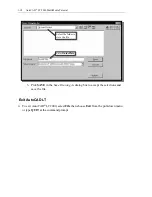
Geometric Construction Basics 1-9
The CAD Database
Designs and drawings created in a CAD system are
usually defined and stored using sets of points in
what is called world space. In most CAD systems,
the world space is defined using the three-
dimensional Cartesian coordinate system. Three
mutually perpendicular axes, usually referred to as
the X, Y, and Z axes, define this system. The
intersection of the three coordinate axes forms a point
called the origin. Any point in world space can then
be defined as the distance from the origin in the X, Y
and Z directions. In most CAD systems, the direction
of the arrows shown on the axes identify the positive
sides of the coordinates.
A CAD file, which is the electronic version of the design, contains data that describe the
entities created in the CAD system. Information such as the coordinate values in world
space for all endpoints, center points, etc., along with the descriptions of the types of
entities are all stored in the file. Knowing that AutoCAD stores designs by keeping
coordinate data helps us understand the inputs required to create entities.
The icon near the bottom left corner of the default AutoCAD Graphics Window shows
the positive X-direction and positive Y-direction of the coordinate system that is active.
The letter W appearing in the icon indicates that the world coordinate system (WCS) is
active. The world coordinate system is a coordinate system used by AutoCAD as the
basis for defining all objects and other coordinate systems. We can think of the origin of
the world coordinate system as a fixed point being used as a reference for all
measurements. The default orientation of the Z-axis can be considered as positive values
in front of the monitor and negative values inside the monitor.
WCS icon





















